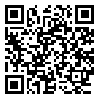BibTeX | RIS | EndNote | Medlars | ProCite | Reference Manager | RefWorks
Send citation to:
URL: http://ijae.iut.ac.ir/article-1-841-en.html
For this study, Polour rangelands were chosen with an area of about 2017 ha in Mazandaran province. The purpose of this study was prediction of dominant species of the rangeland using random forest (RF) and boosting regression trees (BRT) models in the study area. Equal random sampling of vegetation and soil was carried out. 12 work units were obtained in the region that climatic, topography and soil factors were measured at each sampling unit. Five dominant species in the area were Astragalus ochrodeucus, Ferula gumosa, Thymus kotschyanus, Onobrychis cornata and Agropyron repens. The Ten-fold method was used to evaluate the models in the package (caret). Also the statistical coefficients AUC, Kappa and TSS were used for evaluating the model prediction.The results showed that in the RF model of variables K and CaCO3, the presence of the plant species had the highest importance. Also in BRT model, the silt and aspect had the most importance in the model. The results of the function of the models RF and BRT showed that the highest AUC in the BRT model was related to the species Agropyron repens for 0.76 and in the RF model, it was related to the species Onobrychis cornata. The proposed models RF and BRT can be used for introduction of suitable species in range improvement programs.
| Rights and permissions | |
 | This work is licensed under a Creative Commons Attribution-NonCommercial 4.0 International License. |







